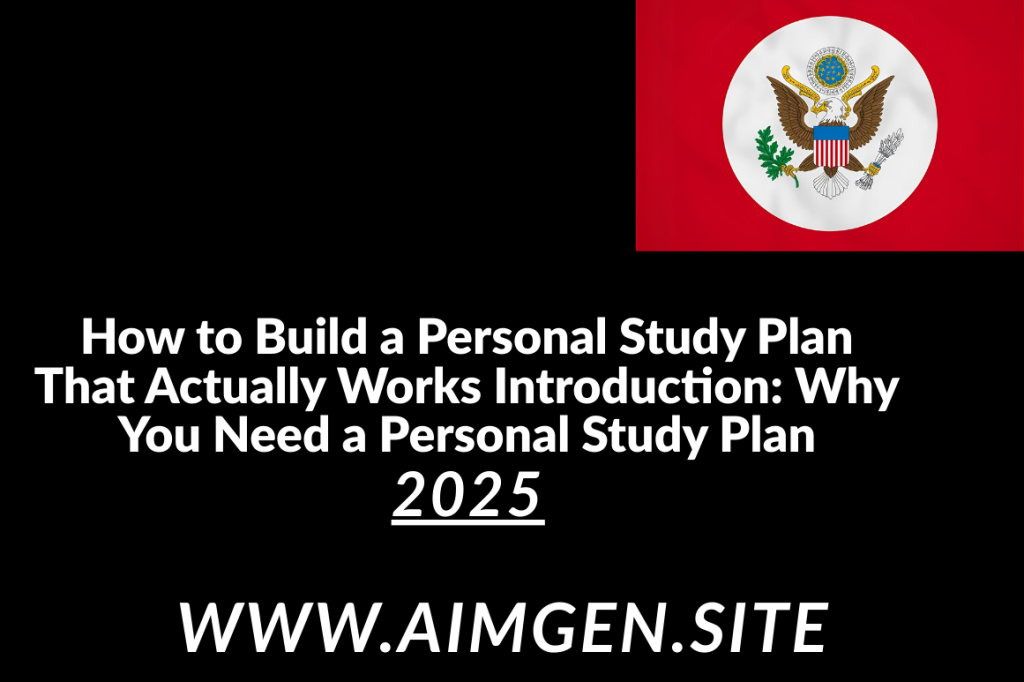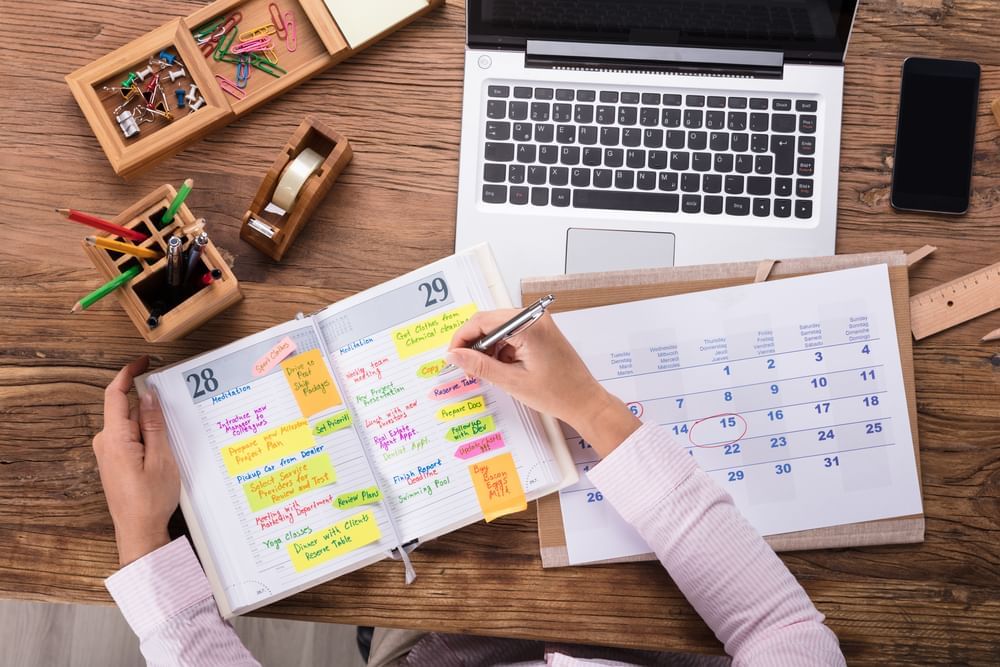
Introduction: Why You Need a Personal Study Plan
Have you ever sat down to study…www aimgen.site and then ended up scrolling your phone for two hours?
🎯 Introduction: Why You Need a Personal Study Plan
Have you ever sat down to study… and then ended up scrolling your phone for two hours?
You’re not alone.
Most students fail to reach their potential not because they lack intelligence, but because they lack a clear, consistent, and customized study plan.
A personal study plan:
- Reduces stress
- Builds discipline
- Maximizes productivity
- Tracks progress
Think of it as your Google Maps for learning—you choose the destination, and it gives you a smart route.
🧠 1. What Is a Personal Study Plan?
What Is a Personal Study Plan?
A personal study plan is a written or digital roadmap that includes:
🎯 Your learning goals
📅 A schedule of topics and time blocks
✅ A system for review and testing
🧘 Breaks, motivation, and mental health check-ins

A personal study plan is a written or digital roadmap that includes:
- 🎯 Your learning goals
- 📅 A schedule of topics and time blocks
- ✅ A system for review and testing
- 🧘 Breaks, motivation, and mental health check-ins
It should match your:
- Learning style
- Goals (exam prep, self-learning, upskilling)
- Time availability
- Strengths and weaknesses

📊 2. Step-by-Step Guide to Building a Study Plan That Works
🧩 Step 1: Define Your Objective
Be specific. Don’t say “Study more.”
✅ Instead, say:
- “Finish Class 12 Chemistry in 3 months”
- “Score 90+ in IELTS by November”
- “Complete Python basics in 30 days”
Break long-term goals into weekly milestones.
⏰ Step 2: Assess Your Available Time
Track how many hours per week you realistically have (excluding sleep, school, work, and breaks).
Use tools like:
- 🗓️ Google Calendar
- 🕒 Time-blocking apps (e.g. Notion, Study Bunny, Forest)
- 📊 Study time logs (manually or digitally)
📌 Step 3: Prioritize Subjects or Topics
Use the Eisenhower Matrix or ABC method:
| Priority | Focus on |
|---|---|
| A | High weightage subjects + weak areas |
| B | Medium priority or upcoming assignments |
| C | Review, easy wins, hobbies |
📅 Step 4: Create a Weekly Schedule (Time Table)
Golden Rule: Study tough subjects when your brain is most alert (usually mornings).
Example Time Block:
- 7–8 AM: Physics (New Concept)
- 6–7 PM: Review notes (History + vocab)
- 8–9 PM: Practice problems (Math)
Use the Pomodoro technique:
25 mins study + 5 mins break
(After 4 cycles, take a 20-min break)
🧠 Step 5: Choose Your Study Methods
Tailor the method to your style:
| Learning Style | Best Study Techniques |
|---|---|
| Visual | Diagrams, mind maps, color-coded notes |
| Auditory | Podcasts, reading aloud, teaching others |
| Reading/Writing | Summarizing, Cornell Notes, writing essays |
| Kinesthetic | Flashcards, hands-on experiments, active recall |
Combine methods for better retention:
- 📘 Read
- ✏️ Write
- 🧠 Recall
- 🧑🏫 Teach
📋 Step 6: Build In Review Cycles
Follow Spaced Repetition to avoid last-minute cramming:
| Review Schedule | Action |
|---|---|
| 1st review | After 1 day |
| 2nd review | After 3 days |
| 3rd review | After 7 days |
| Monthly review | On last weekend of the month |
Use apps like Anki, RemNote, or paper flashcards.

📈 Step 7: Track Progress
Create a simple tracker:
- ✅ Topics covered
- ❌ Pending items
- 📊 Weekly success rate (e.g., 80% plan completed)
Gamify it:
- ⭐ Rewards for weekly goals
- 🚫 Penalties for missed sessions (e.g., less screen time)
😌 Step 8: Include Breaks & Mental Health
Studying isn’t sustainable without rest.
Schedule:
- 🌄 Morning walk/stretching
- ☕ Breaks every 90 minutes
- 🛌 Sleep (7–8 hours minimum)
- 💬 Time for hobbies/friends
Remember: Burnout kills consistency.
🧠 Bonus Tips for Smarter Studying
- Use active recall, not passive reading
- Study difficult subjects before easy ones
- Use the Feynman Technique (teach it to someone else)
- Join study groups for motivation
- Use noise-canceling playlists or ambient sound apps
❌ Common Mistakes to Avoid
- ❗ Overloading the plan: Start small and build consistency
- ❗ Ignoring weak areas: Don’t avoid what you’re bad at
- ❗ Studying for long hours without breaks
- ❗ Comparing with others—personal plans must be personal
✅ Conclusion: Be the CEO of Your Learning
A personal study plan turns chaos into clarity.
It tells you:
- What to study
- When to study
- How to study
- And keeps you on track
Don’t study harder. Study smarter—with a plan tailored for you.
- The Future of Classroom Environment
- The Role of Education in Shaping Future Generations
- How to Build a Personal Study Plan That Actually Works Introduction: Why You Need a Personal Study Plan
- The Future of Classrooms
- How AI Is Transforming the Future of Education










